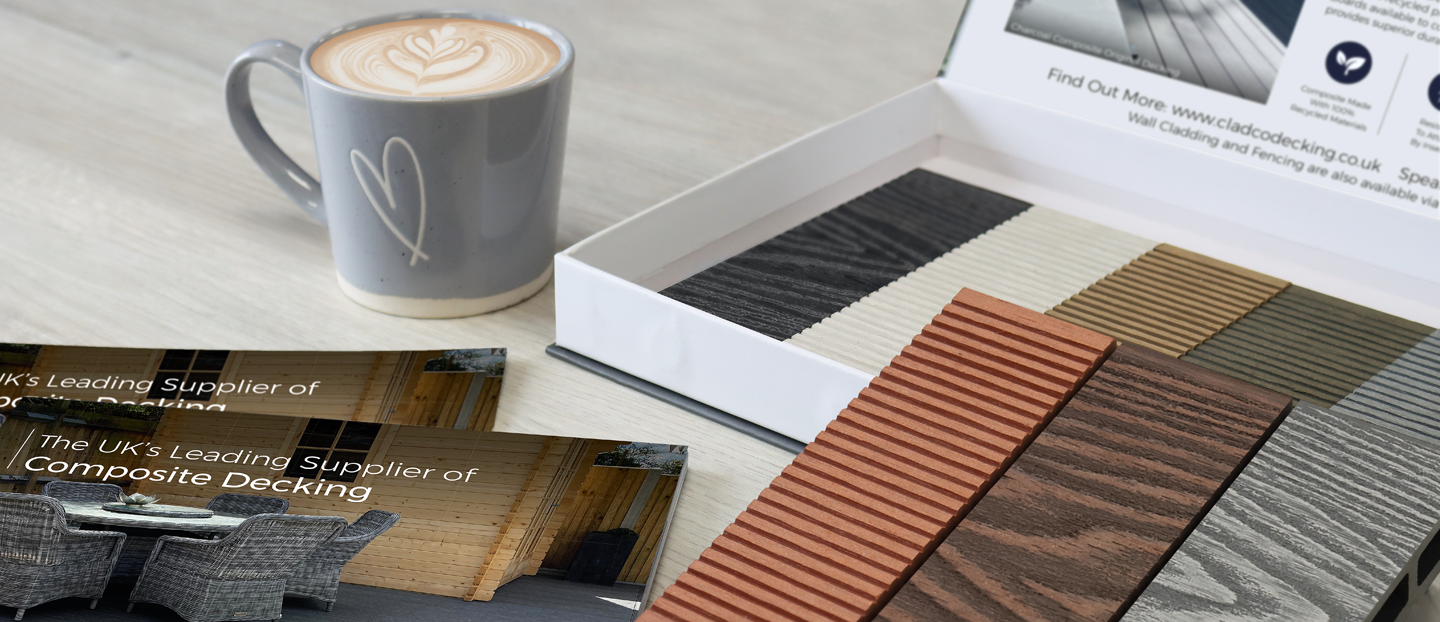Cladding has long been a popular way to improve the protective properties and the look of the exterior of your home. For many years, timber panels have been one of the very few external cladding options available to homeowners on the market. However, as time and manufacturing techniques progress, there are now many more options available to choose from.
Fibre cement and composite cladding both provide a longer-lasting and more structurally sound finish to any building when compared with natural cladding, but which one of these is best suited to your project?
Here, we take a look at the two popular new ways to clad your home and compare cost, installation, aesthetic appeal and durability to help you make the right decision: fibre cement cladding or composite cladding.
Quick Summary
| Composite | Fibre Cement | |
|---|---|---|
| Resistant to harsh climates | Yes | Yes |
| Dimensionally stable | No | Yes |
| Insect and rot resistant | Yes | Yes |
| UV resistant | Yes | Yes |
| Eco friendly | Yes | No |
| Low maintenance | Yes | Yes |
| Vertical installation | Yes | No |
Scroll table to see more
Composite cladding materials
The material used to make up composite cladding is a combination of semi-synthetic products to provide additional strength and durability when compared to hardwood cladding. Cladco’s two composite wall cladding types, our Signature and polymer-capped ProClad range, are manufactured from FSC® recycled hardwood fibres and recycled plastics, which helps to reduce plastic waste and support sustainable forestry.
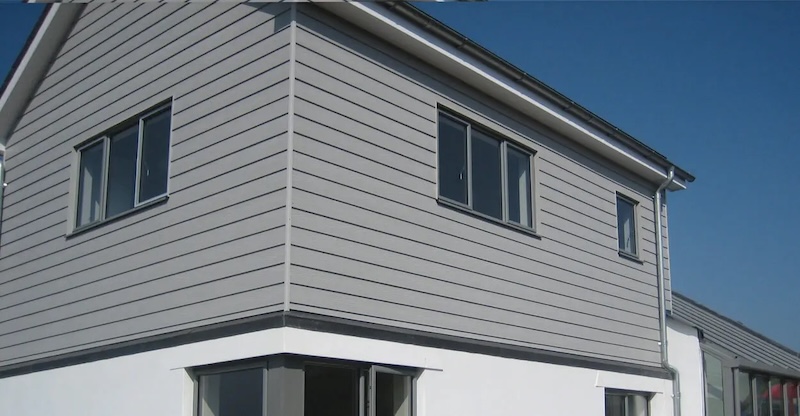

Fibre cement materials
Cladco fibre cement lap cladding is made from a durable, non-combustible material. The boards are formed using a cement base that includes clay, iron, and limestone, combined with sand for added strength and weather resistance. Cellulose fibres are added to maintain structural integrity, while water and additives help activate and bind the ingredients together.
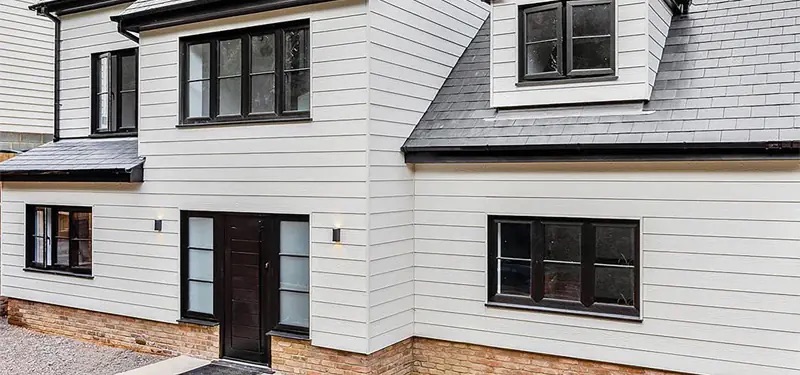

Fibre cement planks can feature a woodgrain-effect texture, giving the appearance and feel of natural hardwood cladding, while also offering the added benefit of a range of colour options to suit your home’s style.
Thanks to its material composition, fibre cement cladding is highly weather-resistant and does not expand or contract with temperature changes, making it a long-lasting and durable cladding product. Cladco fibre cement wall cladding boards also come with a 10-year warranty, offering added peace of mind.
Calculate the cost, number of boards and fixings you may need using the Cladco Cladding Calculator.
Costs
When comparing the cost of the two cladding materials, composite wood cladding is typically the more budget-friendly option at the outset. The material itself is generally cheaper to source and manufacture into boards. The cost of labour to install composite cladding, meanwhile, remains at a standard rate, thanks to the easy tongue-and-groove fitting technique.
Fibre cement, on the other hand, tends to be more expensive to purchase and install due to the additional manufacturing processes required. It also typically incurs higher labour costs because of the slightly more complex installation method.
However, the long-lasting durability and low-maintenance benefits of fibre cement offset the higher initial cost, making it a more economical option in the long run.
Ease of installation
Cladco composite cladding boards are simple and quick to install, using a simple tongue and groove method that makes them suitable for both horizontal and vertical installation on almost any building project.
At Cladco, we also offer a range of composite trims, as well as joists/battens, which are available to help achieve a seamless installation. For more information on our composite wall cladding boards and how they’re installed, see our Signature range installation guide here. If you are installing ProClad, you can see our installation guide here.
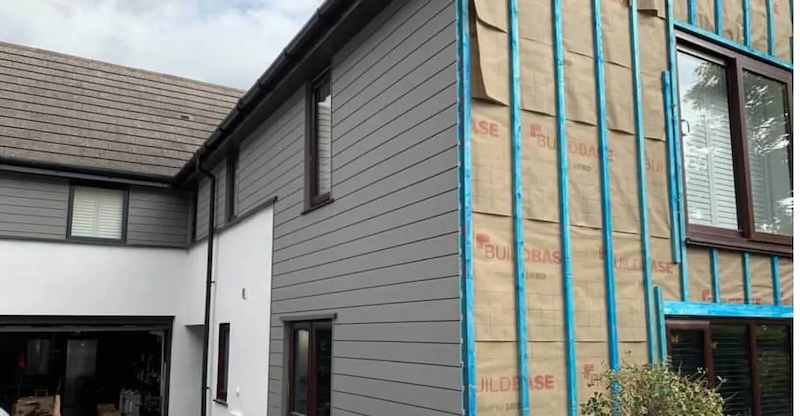

Fibre cement wall cladding, on the other hand, is a heavier product when compared to hardwood or composite, requiring more time, work and planning to install. Boards are only able to be installed using a unique horizontal featherboard technique, which makes for an attractive appearance, but does require more skill to achieve a professional finish and cannot be fitted vertically.
If you are unsure about installing fibre cement cladding yourself, always seek advice or hire a professional.
Maintenance
Unlike timber cladding, composite cladding, once installed, is very low maintenance. The wood/plastic composition of the product means there is no need to varnish, seal or paint the boards to keep them in good condition. To offer maximum flexibility in achieving a finish that complements your property's character and surrounding features, our Signature range is available in a choice of eight colours, while the ProClad board comes in seven carefully selected shades.


Fibre cement cladding is also a very low-maintenance solution, with the added benefit of UV fade-resistant properties to preserve the colour. Much like composite, fibre cement cladding is designed to be low-maintenance, with no need for regular painting or sealing. If you enjoy more creative control, the unpainted option gives you the freedom to choose your own colour. Or, for a quicker finish, our fibre cement lap cladding comes in eight attractive, ready-coloured options to suit a range of styles.
Please note: Fibre cement colours can chip if mishandled during building work. With this in mind, Cladco supplies a colour-matched fibre cement touch-up paint in the same eight colours for any areas that may need minor attention.
Durability
Composite is a durable material in comparison to wooden cladding. The combination of wood and plastic makes for a strong board that will not rot, warp or splinter over time and can increase the insulation of your house when paired with a well-protected sub-structure. Cladco’s Signature composite cladding has a 10-year warranty, while the ProClad composite cladding board comes with an impressive 15-year warranty when installed as per the installation guide. Composite cladding simply requires regular cleaning using a brush and soapy water to keep the boards looking brand new for longer.
Fibre cement cladding offers the highest level of durability between the two cladding materials, with enhanced resistance to harsh weather, whether it's intense heat, saltwater exposure, or freezing temperatures. This makes it an excellent choice for properties in coastal or moisture-prone areas. Cladco's fibre cement lap cladding boards also help protect your home's exterior from UV-related colour fading (a common issue with some other materials), all while delivering a clean, modern finish to your house or garden building.
Better still, fibre cement cladding is one of the few options on the market that often comes with a fire rating for increased safety.
Aesthetic appeal
Installing composite cladding to the exterior of your home is an instant way to create a contemporary exterior. Cladco’s composite cladding boards can be clad both horizontally and vertically to create the illusion of added breadth or height.
Available in a wide choice of colours - from natural hues such as olive green and coffee, to more muted shades of ivory and light grey, Cladco Signature composite wall cladding and Signature woodgrain composite wall cladding make styling your home's exteriors to match your style, simple. ProClad woodgrain composite wall cladding has a total of seven colours to choose from, including pewter, sandstone and burnt oak.
Fibre cement lap cladding boards by Cladco are available in a variety of eight colours, from soft pastels to contemporary greys. The unique layered featherboard technique, in which boards are fitted with, brings a luxury look to the outside of any home or commercial building.
Alongside the eight standard colours, Cladco fibre cement lap cladding boards also come in an unpainted option, perfect if you want to pick your own shade to match your home or add a personal touch to your project.
Environmental impact
The recycled hardwood fibres and plastic elements within Cladco’s composite panels are sourced from FSC® certified forests, helping to minimise the impact on the environment, whilst the recycled plastics are a fantastic way to reduce unnecessary plastic waste.
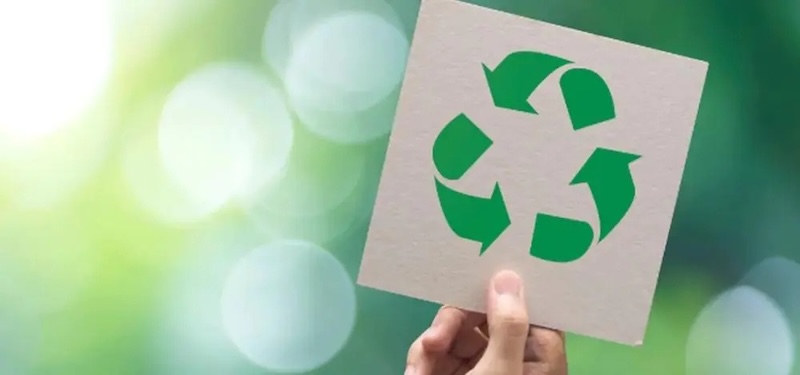

Fibre cement cladding, however, is less environmentally friendly than composite, as its manufacturing process requires more water and energy. However, its long-lasting durability means it can be more sustainable in the long run, as it doesn’t need to be replaced as frequently as materials like lumber cladding boards, which require the regular felling of trees.
Conclusion
Selecting the right cladding for your home goes beyond just protecting it from the elements. It plays a key role in improving insulation and enhancing the overall aesthetic of your property.
As you make your decision, consider not only the initial costs and labour involved, but also the long-term maintenance, durability, and fire safety. Think about how the cladding will fit with the style you want to achieve, whether that’s a sleek, contemporary look or something more classical and homely. By weighing up all these factors, you’ll find the perfect balance between practicality and design, ensuring your home stands out for years to come.
For more information about Cladco Composite and Fibre Cement Wall Cladding, including installation techniques and general advice, give our helpful Sales Team a call on 01837 659901.
Last Updated: October 29, 2025
Please note all information is correct at the time of writing. However, we encourage you to do your own research to ensure it remains accurate and relevant to your needs.





